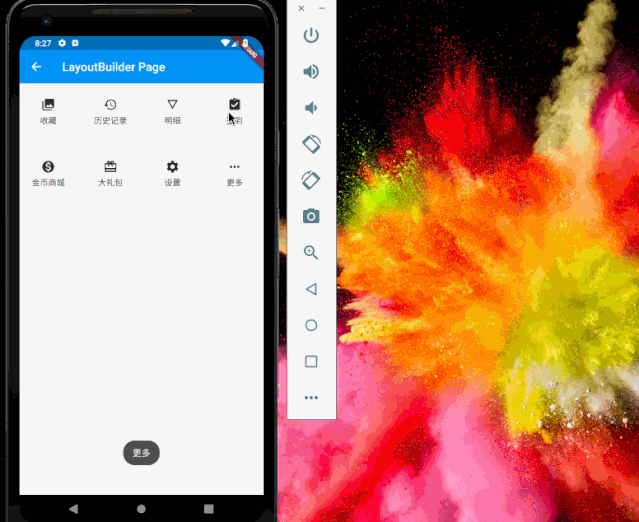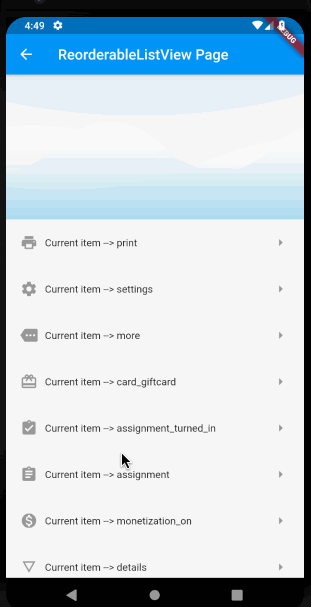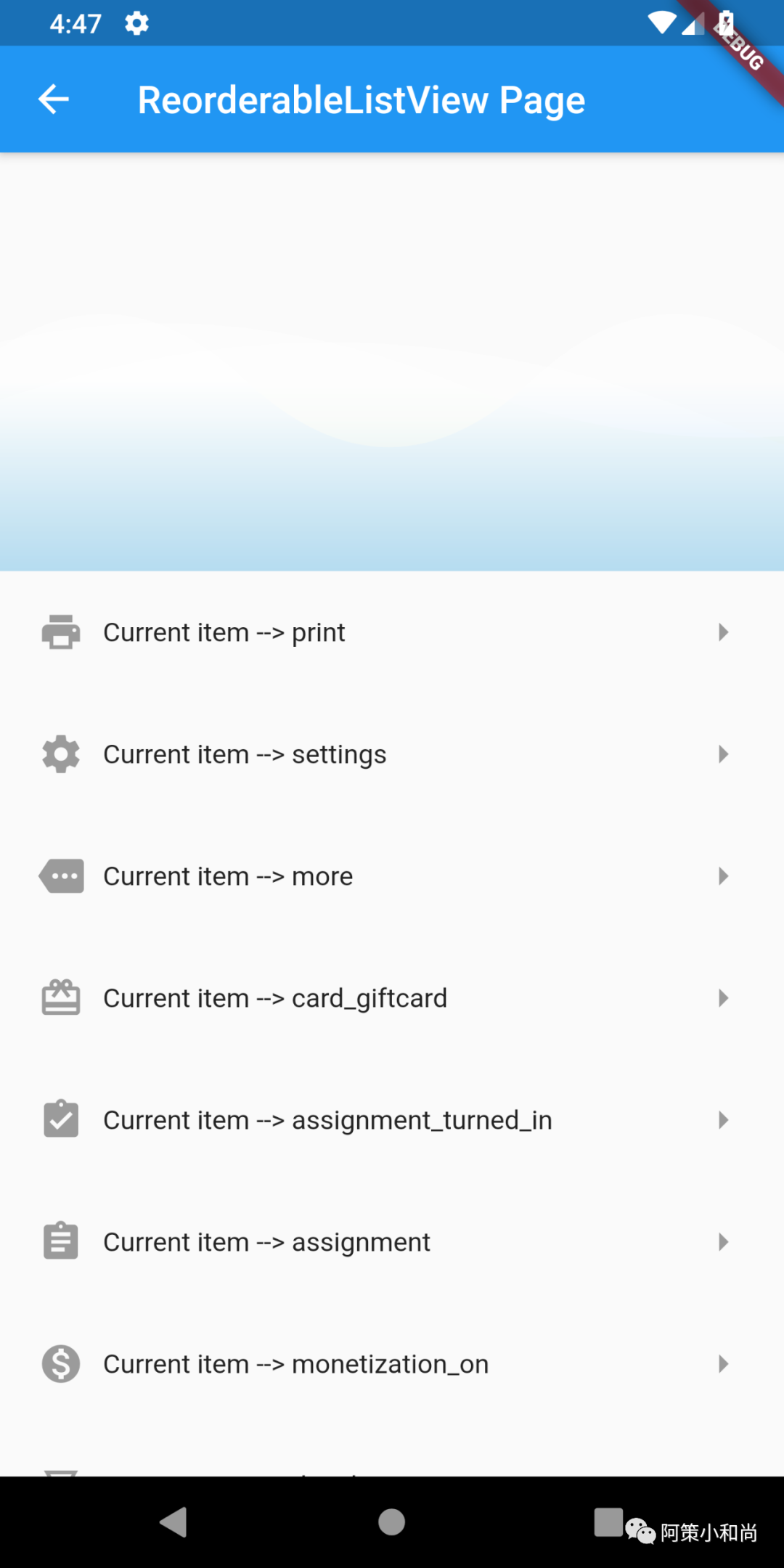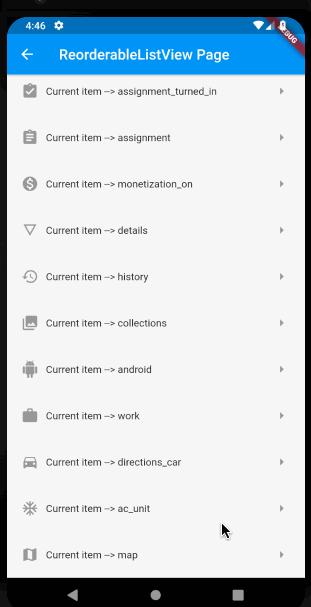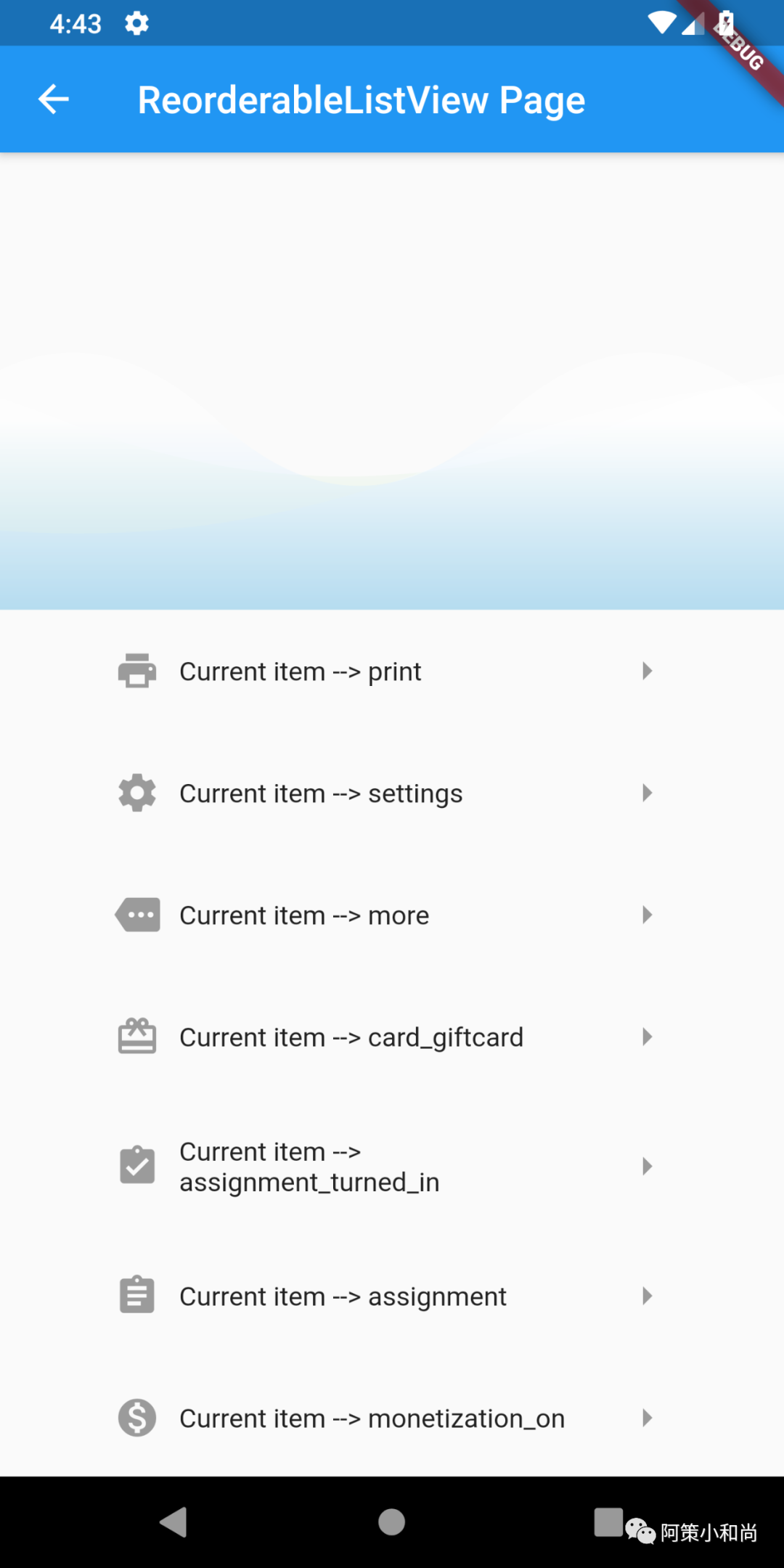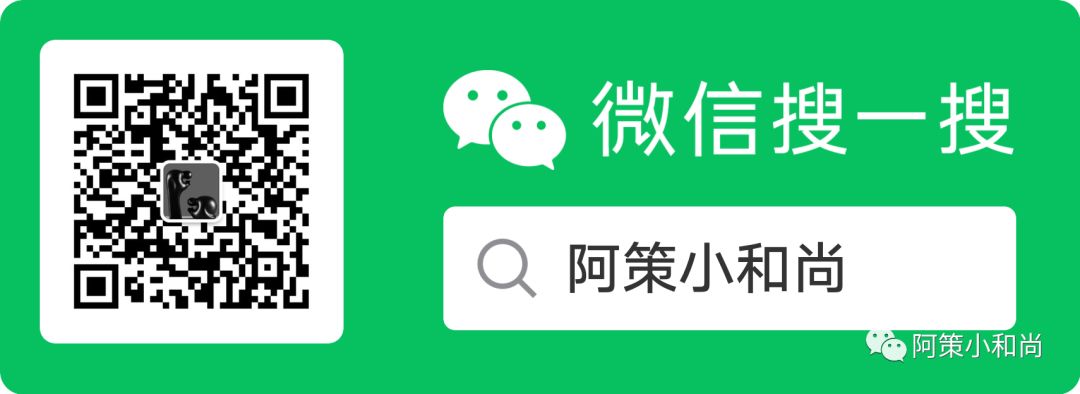【Flutter 专题】98 易忽略的【小而巧】的技术点汇总 (六)
和尚继续补充日常学习中遇到的很实用的技术点;
LayoutBuilder
和尚在一些场景下需要根据父类布局大小不同展示不同的子类 Widget,例如和尚在适配大尺寸平板或横竖屏切换等场景时,此时需要用到 LayoutBuilder 和尚理解为尺寸布局构造器;
源码分析
简单分析源码可得,LayoutBuilder 是一个继承自 ConstrainedLayoutBuilder 的构造器;通过 builder 获取一个 BoxConstraints 对象,之后通过检查 constraints 来确定要展示的内容;
class LayoutBuilder extends ConstrainedLayoutBuilder<BoxConstraints> {
const LayoutBuilder({
Key key,
LayoutWidgetBuilder builder,
}) : super(key: key, builder: builder);
}
案例尝试
和尚通过 GridView 默认展示一行的图标,预期是在大部分设备上展示 4个 item,随着屏幕的变大尽可能多的展示 item,当屏幕允许展示所有 item 时为上限;于是和尚设定了单个 item 宽基础为 90,根据 size.maxWidth 进行判断;
LayoutBuilder(builder: (context, size) {
if (size.maxWidth ~/ 90 >= 4 &&
size.maxWidth ~/ 90 <= _dataList.length) {
_length = size.maxWidth ~/ 90;
} else if (size.maxWidth ~/ 90 > _dataList.length) {
_length = _dataList.length;
} else {
_length = 4;
}
return _gridWid();
}
_gridWid() {
return GridView.builder(
physics: ScrollPhysics(),
primary: false, shrinkWrap: true,
gridDelegate: SliverGridDelegateWithFixedCrossAxisCount(
crossAxisCount: _length, mainAxisSpacing: 8.0,
crossAxisSpacing: 8.0, childAspectRatio: 1),
itemCount: _showMore ? _dataList.length : _length,
itemBuilder: (context, index) {
var dataItem = _dataList[index];
if (index < _length - 1 || _showMore) {
dataItem = _dataList[index];
} else {
dataItem = _dataList[_dataList.length - 1];
}
return GestureDetector(
child: Container( color: Colors.white70,
child: Column(mainAxisAlignment: MainAxisAlignment.center,
children: <Widget>[
Icon(dataItem.icon),
SizedBox(height: 4),
Text(dataItem.text)
])),
onTap: () {
if (_length < _dataList.length && dataItem.text == '更多') {
_showMore = !_showMore; setState(() {});
}
Toast.show(dataItem.text == '更多' ? '更多' : _dataList[index].text, context, duration: Toast.LENGTH_SHORT, gravity: Toast.BOTTOM);
});
});
}
ReorderableListView
和尚刚尝试了 Draggable + DragTarget 实现的基本的拖拽 GridView,今天尝试一下系统提供的 ReorderableListView 拖拽列表;
源码分析
简单分析源码可得 ReorderableListView 主要实现 children 子类 item 加载与 onReorder 拖拽子 item 到新的位置时回调;
ReorderableListView({
Key key,
this.header, // 列表头部标题
@required this.children, // 列表子类 item
@required this.onReorder, // 拖拽到新位置时回调
this.scrollDirection = Axis.vertical, // 滑动方向,水平或竖直
this.padding, // 内边距,仅用于 children
this.reverse = false, // 是否反转
})
案例尝试
1. onReorder
onReorder 是当 item 拖拽到新的位置时 ReorderCallback 回调,其中回调中返回新旧两个数组下标用于标记;
@override
Widget build(BuildContext context) {
return Scaffold(
appBar: AppBar(title: Text('ReorderableListView Page')),
body: ReorderableListView(
header: Container(height: 200.0,
child: ACEWave(waveWidth, waveHeight, 200.0,
startOffsetXList: startOffsetX, startOffsetYList: startOffsetY,
durationList: duration, waveColorList: colorList)),
reverse: false,
children: _listWid(),
onReorder: (oldIndex, newIndex) {
if (newIndex == _dataList.length) --newIndex;
final temp = _dataList.removeAt(oldIndex);
_dataList.insert(newIndex, temp);
setState(() {});
}));
}
_listData(index) {
return Padding(
key: ValueKey(_dataList[index]),
padding: EdgeInsets.all(20.0),
child: Row(children: <Widget>[
Icon(_dataList[index].icon, color: Colors.black38),
SizedBox(width: 10.0),
Expanded(child: Text(_dataList[index].text)),
Icon(Icons.arrow_right, color: Colors.black38)
]));
}
_listWid() => <Widget>[for (int i = 0; i < _dataList.length; i++) _listData(i)];
2. scrollDirection
scrollDirection 为列表滑动方向,与普通 ListView 一致,分为 Axis.horizontal 横行和 Axis.vertical 纵向两种;
scrollDirection: Axis.horizontal,
3. header
header 为当前列表标题头部;
_headerWid(horizontal) {
return horizontal
? Container()
: Container(height: 200.0,
child: ACEWave(waveWidth, waveHeight, 200.0,
startOffsetXList: startOffsetX,
startOffsetYList: startOffsetY,
durationList: duration,
waveColorList: colorList));
}
4. reverse
reverse 为是否反转,即初始时是否是从最后开始;
reverse: true,
5. padding
padding 为内边距,但仅针对列表 children 部分,对于头部 header 并不起效果;
padding: EdgeInsets.all(40.0),
注意事项
-
ReorderableListView 没有类似于 ListView.builder 等构造方法,需要把 List 中所有 item 一次性加载完;
-
ReorderableListView 中所有 children item 最外层必须要有唯一的 Key;
-
和尚测试过程中,当拖拽到最后一个时,因为先 remove 掉这个 item 再 insert 添加 item 时,此时 dataList 数量已经减少,newIndex 需要减一处理;
LayoutBuilder 案例尝试 + ReorderableListView 案例尝试
和尚还会继续对日常应用的小知识点进行学习和尝试;对于底层的研究还不够深入,如有错误,请多多指导!
来源:阿策小和尚
本文分享自微信公众号 - 阿策小和尚(gh_8297e718c166)。
如有侵权,请联系 support@oschina.cn 删除。
本文参与“OSC源创计划”,欢迎正在阅读的你也加入,一起分享。
